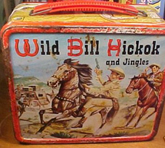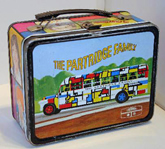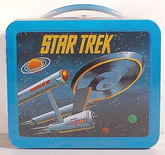
arts
Lunch Boxes Capture Memories As Well As Characters
Picasso it’s not, but the art emblazoned on the side of metal lunch boxes from the 50’s through the 80’s has become very collectible in recent years. The golden age for the industry was 1954 through 1987. Frequenters of yard sales have been snapping them up and reselling them on EBay for some amazing prices.
 I personally craved a Hopalong Cassidy lunch box (a dream unfulfilled), and only recently learned that it was one of the first “celebrity” boxes to appear in 1949. It was quickly followed by Roy Rogers and Dale Evans, which opened up the floodgates for all sorts of character-driven boxes, featuring television shows, pop icons, comic book heroes, and more (remember the unicorns and rainbows?).
I personally craved a Hopalong Cassidy lunch box (a dream unfulfilled), and only recently learned that it was one of the first “celebrity” boxes to appear in 1949. It was quickly followed by Roy Rogers and Dale Evans, which opened up the floodgates for all sorts of character-driven boxes, featuring television shows, pop icons, comic book heroes, and more (remember the unicorns and rainbows?).
Most boxers (as collectors like to be called) stick to particular genres such as westerns, super heroes, Disney or science fiction, and prices have leveled off since they rocketed up in the 80’s. Still, prices can be astounding. A 1983 Return of the Jedi goes for $225, while a 1978 Hulk with thermos intact sells for $700, and a 1974 Scooby Doo can be yours for $1,060. If you think that’s impressive, a 1954 Superman box sold recently for $11,500. Like any collectible, the valuations are based on the condition, so if your old lunch box has dents and scratches, and the thermos is rusty around the top, you might consider finally throwing them out with the trash, because they are just about worthless. If you want to know a lot more about what your lunch box might be worth, check the Lunch Box Pad.
rocketed up in the 80’s. Still, prices can be astounding. A 1983 Return of the Jedi goes for $225, while a 1978 Hulk with thermos intact sells for $700, and a 1974 Scooby Doo can be yours for $1,060. If you think that’s impressive, a 1954 Superman box sold recently for $11,500. Like any collectible, the valuations are based on the condition, so if your old lunch box has dents and scratches, and the thermos is rusty around the top, you might consider finally throwing them out with the trash, because they are just about worthless. If you want to know a lot more about what your lunch box might be worth, check the Lunch Box Pad.
The artists for these creations all had the same size canvas to work with (like a home page on a web site), but each brought a unique flair to the art to make it special. When you get beyond the cartoon character boxes that relied on the same art as the TV show, you can begin to see some really personalized techniques. Some of these artists were freelancers and some worked in a bullpen of artists who  worked for the lunch box manufacturers, but they all knew how to maximize the impact of the art that appeared on the “face” of the box.
worked for the lunch box manufacturers, but they all knew how to maximize the impact of the art that appeared on the “face” of the box.
The last metal lunch box rolled off the line sometime around 1985. Most kids carry their lunches to school in insulated bags, if they carry a lunch at all (I have this sneaking suspicion that they get all their daily food intake out of a vending machine). So there’s nothing left to do with the old metal lunch boxes but to appreciate them for what they are – art masterpieces in miniature.
Jay Harrison is a graphic designer and writer whose work can be seen at DesignConcept. He's written a mystery novel, which therefore makes him a pre-published author.
© 2006-2013 ConceptDesign, Inc. Terms of Use
BoomSpeak - For babyboomers - by babyboomers.